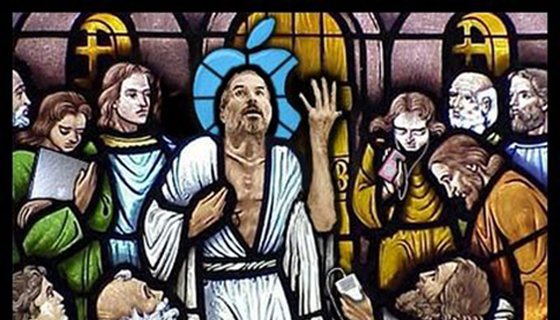Is Brand Building Replacing Religion? Part 1
“The only thing that consoles us for our miseries is diversion. And yet it is the greatest of our miseries.” –Blaise Pascal, Pensees
The above quote was found in Media Unlimited, a book by Todd Gitlin I used as part of my graduate thesis research seven years ago. I was developing initiatives assisting youth of color in disadvantaged communities to create and utilize their social, cultural, economic and political capital. How do you design a program to hold the attention of the ‘heads down tribe’, those who are always looking at their smartphones? Pascal seemed to understand that distractions aren’t always healthy for the soul.
Is it no secret that the influence of religious institutions who care about the soul are declining in the United States of America. They are especially anemic in Western Europe, the birth of our modern enlightenment ideals. Civic engagement has also been on the decline since World War II. Fifteen years ago, Robert Putnam released Bowling Alone: The Collapse and Revival of American Community detailing this downward slide up until the year 2000. (In this decade, we may be witnessing a rebirth of civic engagement from various movements dealing with LBGTQA issues, police brutality and fair wages.)
Today, brands are occupying a role that typically for-profit companies did not fill. The big existential questions of ‘why am I here?’ and ‘what is the meaning of life?’ was once the exclusive domain of theologians and philosophers. They attempted to distill life down to principles that governed our conscience and fed our souls. Corporate entities only worried about their vision, mission and bottom line. (Some say the modern church is like this as well but it is not supposed to be.) With the rise of large multinational media corporations and the invention of the internet, brands have been positioned to fill this growing void.
Skepticism is the default position for digital natives who are growing up with a pluralistic worldview accessing lots of digital information. Mobile phones add a high degree of freedom and choice. This kind of autonomy means that we have the power to answer the big existential questions on our own, choose some other entity to help us answer them or ignore the questions altogether. Distraction is a skill nowadays. But it also means that we swap innovation for tradition. It typically means that what is old is ‘not cool’ and what is new is ‘way cool.’ Most religions are rooted in tradition but a few re-invent themselves from time to time. 21st century brands are committed to innovation.
Think about this.
The 20th century American brand was a product/service with a logo (word mark, letter mark, etc) that symbolized its credibility. They made emotional promises with a clear commitment to American Exceptionalism. If they were successful, this increased faith in the brand and in America. But the Christian faith and American civic culture demanded limits to consumerism through the Christian Sabbath. As a child, stores did not open on Sunday whether you were a Christian or not. It is this influence that has waned in the late 20th century. (It is also possible that this trend can reverse.)
Here is an example of a 20th century brand. Look above at this 1950s Van Heusen Century Shirt print ad with actor Ronald Reagan. It has all of the right components: celebrity endorsement, emotional appeal to professional men (won’t wrinkle…ever!) and a image demonstrating the appeal. Although today we dress more casual, the typical 1950s style was to press and starch everything and it had to look good all day.
The 21st century American brand, as Alina Wheeler says, is “a promise, a big idea and expectations that reside in each customer’s mind about a product, service or company.” (Some 20th century brands figured this out as well.) This is connected to the brand’s vision and mission guiding its actions. Their logo (word mark, letter mark, etc) is used primarily as an identifier. They make emotional promises (branding) connected to their product/service. More 24/7 marketing channels (website, email, social media, etc) mean more levels of engagement. This has increased the complexity of maintaining a brand across various print and digital mediums. With the decline of religious influence, faith and veneration in a brand can increase exponentially because they are open to listening and talking to customers at any time. (Twitter anyone?!)
Shares, likes and online chatter can catapult a brand to messiah status IF they are presenting something new and different. The best examples of this thus far are three global brands: the NBA, the NFL and the MLB. When I traveled to Nairobi Kenya 25 years ago, I was shocked to see matatus (ma-tah-toos), mini-buses completely covered with an NBA team’s logo and colors.
Through my studies as a former seminary student, there are four cornerstones of human existence that brands are now thinking about:
- Humans need an object to believe in. (reverence, fear, worship, etc)
- Humans need a belief system to sustain their devotion to the object. (words, images, etc)
- Humans need ways to practice their devotion to the object. (actions, culture, skill development, etc)
- Humans need to cherish the object in community and beyond. (narratives, advocacy, conversion, etc)
These are also present in Judaism, Christianity, Islam and probably other theistic religions. (The cornerstones are similar to Abraham Maslow’s Hierarchy of Needs when he added self transcendence later.)
But there is a fifth cornerstone that many sports brands practice but some brands in other industries do not. I will detail it in part 2.
